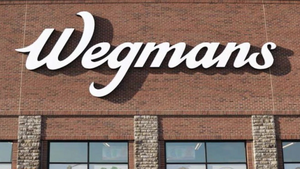A forum for contributed pieces from industry thought leaders, retailers, wholesalers and manufacturers. The views expressed are those of the authors.
Can regional grocers compete with Walmart?Can regional grocers compete with Walmart?
Walmart’s market share in ecommerce only continues to grow. But there are things you can do about it

In early December I hosted an SN webinar with top industry executives from Raley’s, Giant Eagle and Lowes Foods. One of the primary topics of conversation was the impact that Walmart is having on regional grocers. Below is a summary of that conversation and additional detail with some updates.
Walmart has been steadily increasing its market share in the online grocery sector, significantly impacting regional grocers across the United States.
According to a recent report by Brick Meets Click and Mercatus, Walmart captured a staggering 37% of U.S. online grocery sales in Q2 2024. This represents a substantial gain from previous years and has put immense pressure on smaller, regional players but also the big guys like Kroger, Albertsons, Publix, etc.The data in the Bricks Meet Clicks Mercatus are great but unfortunately not surprising.
Walmart has been investing significant dollars and resources in technology to enhance the customer experience to grow their online grocery business and the price and convenience is stealing once loyal customers from many regionals. Global Walmart ecommerce sales saw 20% year-over-year growth.
Why? Why is Walmart investing so much energy on growing their ecommerce business. It’s simple, also, according to a Grocery Dive article and Bricks Meet Clicks Grocery e-commerce sales are predicted to grow 3 times faster than in-store sales. WHAT? ecommerce in grocery wasn’t just a COVID fad! While not growing at the explosive rate it did during COVID customers are continuing to move toward the convenience of an online or mobile order.
Grocery ecommerce sales are predicted to increase at a compound annual growth rate of 4.5% over the next five years — more than three times faster than the 1.3% rate forecasted for in-store.
Walmart has gained market share in several areas including:
Rural and suburban areas: As the famous stat goes 99% of the country’s population lives within 15 miles of a Walmart. Their 4,600-plus stores in the U.S. provides Walmart an extensive store network and provides a convenient pickup option for customers
Price-sensitive consumers: In this inflationary period Walmart’s reputation for low prices attracts budget-conscious shoppers seeking online grocery convenience
Time-strapped customers: Walmart’s efficient fulfillment processes and delivery options cater to busy consumers who value convenience
The good news is that all hope is not lost. There are solutions that several regional grocers have already implemented and have significantly reduced their exposure and grown their loyal base of customers.
Regional grocers can’t do much about the sheer number of locations Walmart has but they can combat the customers they are taking (90% of Americans live within 10 miles of one of its stores). They need to focus on their unique strengths in their communities and leverage technology to enhance the customer experience. Here are just a few ways retailers have defended and even expanded their turf:
Hyperlocal focus: Emphasize locally sourced products and partnerships with regional suppliers to differentiate offerings
Loyalty / Personalization programs: Loyalty programs need to be the focal point of your roadmap. Omni-channel promotions provide a true 360 degree experience. Reward repeat customers with exclusive discounts and benefits across the store. Personalization is crucial as discussed above but providing relevant information and suggestions will strengthen the relationship and trust with the customer. It also provides attribution for other marketing and retail media events and helps create a true omni-channel experience
Enhanced convenience: Explore innovative 1st and 3rd party delivery options and implement technology to enhance pickup. Some 30% of online Walmart customers paid a convenience fee to received orders in 3 hours or less
Retail Media: Establishing or building up your retail media strategy will be a crucial part of your 2025 strategy. No matter how big or small all retailers need to find their strategy in order to take advantage of the momentum in this space. It will help drive margin as well as a number of the experiences mentioned above
Order Management and Fulfillment engine: It’s not enough to have a great front end ordering process. A comprehensive order management and fulfillment solution is necessary to own the entire experience and scale order volume. There is nothing worse than having a great website/mobile app with a high conversion rate but not having the capacity to fulfill the volume in a timely manner
Pick up enhancements: While delivery has caught up to pick up (delivery - $4.8 billion / pickup $4.2 billion in October 2024), pickup is still growing and is a convenient for customers. Pickup grew 20% from October 2023 to October 2024. Expanding pickup windows, utilizing location technology to shorten wait times and enabling upsells during the pickup process will help close the gap and increase an already larger basket size
Reduce Substitutions: If you are utilizing a perpetual inventory solution, use that data to integrate into your front-end ecommerce sites as well as your fulfillment engine to educate customers and associates that those items may be in stock soon or simply in the back room and no need for a sub. Substitutions are typically the number one complaint from customers as they don’t get 100% of what they want from their shopping experience. Minimizing subs and handling the communication when they do happen should be a major focus of anyone’s ecommerce program
Fresh & MTO (Made-to-Order): Weekly groceries as well as today’s lunch and dinner options are not only convenient but drives more visits to the store and further creates loyalty
The worst thing that regional retailers can do to try and compete with Walmart and other mass retailers is NOTHING. Maintaining the ‘status quo’ for fear of failure is no longer an option. With competition from Walmart and the advancement of AI, innovations within retail are moving fast and retailers need to advance their efforts and speed up their roadmaps to not just keep, but grow their customer base.
Regional grocers can level the playing field by adopting technologies that help with all the above. Some retailers have the IT resources to build some of the solutions required to enhance their ecommerce ecosystem. However, the majority either don’t have the resources or the expertise to build themselves. The good news is there are plenty of Cloud-based solutions and technology providers that specialize in these solutions. This can help regional grocers get to market faster, with less internal resources and most likely without significant upfront investment.
Want to discuss more or add to the discussion? Would love to meet up at NRF in NYC. Please feel free to reach out to me on LinkedIn to schedule some time.
About the Author
You May Also Like






